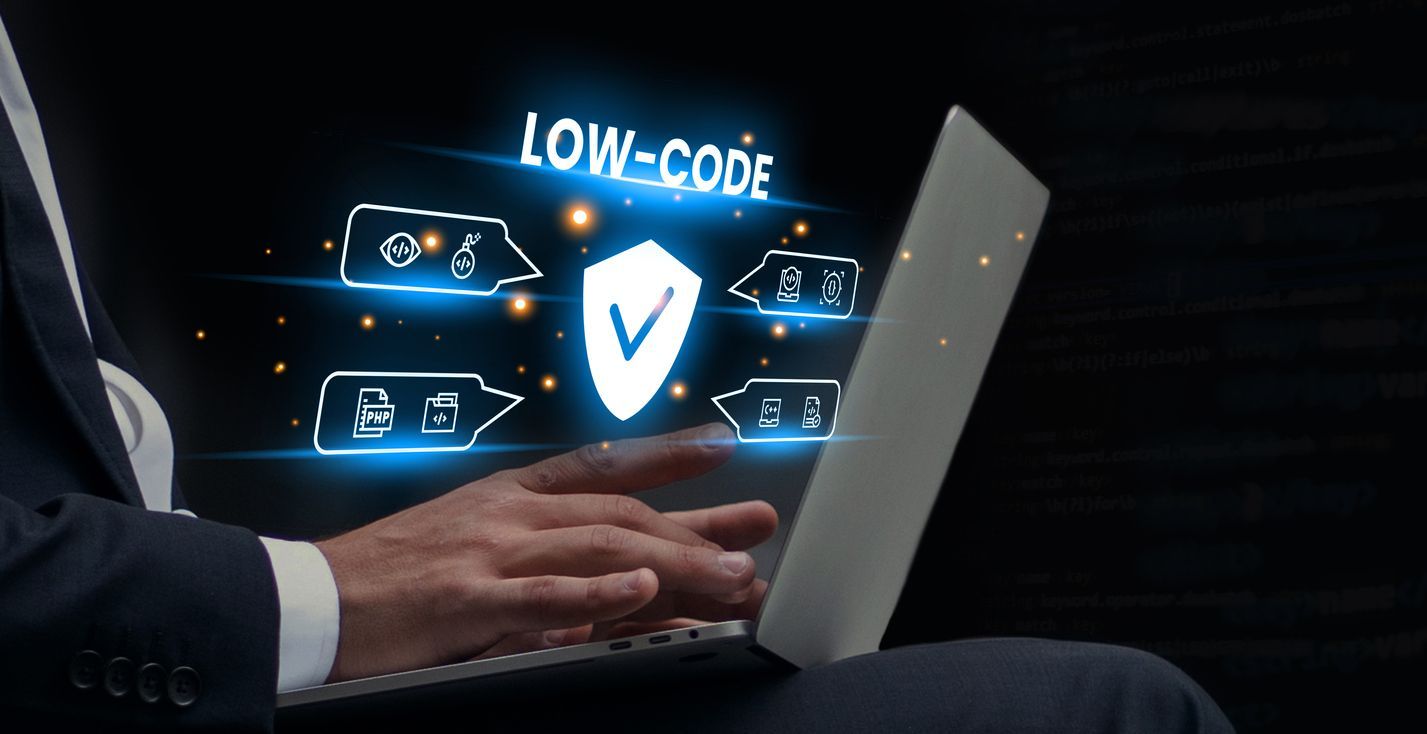As CIO, you know that process excellence is essential for success in the volatile business landscape of 2023. But choosing the proper process transformation platform is not just about selecting the shiniest tool in the box; it's like choosing a reliable car for a long road trip.
You consider the vehicle's durability, flexibility, and ability to handle different terrains. Hence, you must refrain from making a short-sighted choice that compels you to change cars whenever there's a change in terrain. The same goes for a BPM platform; it should serve you well in various needs, whether process transformation, infrastructure modernization, or creating new apps and portals.
A modern BPM platform can provide the tools to stay ahead of the competition. From data- and form-based apps and orchestration to cross-functional automation and mobile apps, the modern BPM platform should handle a lot that's on your transformation agenda.
Hands-on and practical CIOs can be bold about choosing the right BPM platforms. Here are a few BPM trends to watch in 2023.
Hyper Automation
“Hyperautomation involves the orchestrated use of multiple technologies, tools or platforms, including artificial intelligence (AI), machine learning, event-driven software architecture, robotic process automation (RPA), business process management (BPM) and intelligent business process management suites (i-BPMS), integration platform as a service (i-PaaS), low-code/no-code tools, packaged software, and other types of decision, process, and task automation tools,,” according to Gartner.
As you may rightly infer from the above, hyper-automation doesn’t mean using a single bloated technology platform. Instead, it means using multiple technologies (sometimes best-in-breed technology) in unison. That’s where an adaptive and modern BPM platform becomes crucial in ensuring that all technologies and processes are in sync via this platform. It partly serves as an integration platform-as-a-service (i-PaaS) and partly as a low-code/no-code application development platform.
CIOs can work with their teams to pick processes that are good candidates for automation and select the right technology to automate those processes. The first step is to determine where the organization stands today vis-à-vis technologies that enable hyper-automation and identify the gaps between what different functions are automating in silos and what could be automated across departments and business units using the BPM layer.
For a deep-dive into BPM vs. iPaaS, read “BPM Vs Orchestration Platform – The Big Picture”
Intelligent Process Automation (IPA)
Intelligent process automation (IPA) combines traditional automation technologies with artificial intelligence (AI) and machine learning (ML) to create more intelligent and adaptive processes. IPA incorporates automation beyond tasks, allowing you to add machine learning and decision-making capability. It enables organizations to take a more proactive approach to manage their business processes by continually improving them based on ML, data insights, and user feedback.
CIOs can task their teams to identify processes that need automation of activities/tasks with human input and may benefit from ML and adopt the appropriate BPM tech stack to achieve IPA.
Two quick tips may help achieve the above:
- Take a holistic approach: analyze the entire process landscape to identify areas for automation.
- Ensure interoperability: prioritize BPM platforms that can seamlessly integrate with other technologies for a unified automation ecosystem (ERPs, CRMs, CLMs, RPA).
Digital Process Automation (DPA)
Forrester divides Digital process automation (DPA) into two categories, i.e., DPA Wide and DPA Deep. DPA-wide platforms help technology leaders to build and implement the broadest possible range of process automation use cases across the enterprise.
“AgilePoint continues to compete and, often, win in the most challenging environments. Multiple reference customers indicated that AgilePoint is being used enterprise-wide for mission-critical applications”, notes Forrester in its
Wave™ Report Digital Process Automation Software (Q4 2021).
If you manage IT strategy and ops for a large enterprise, using a platform that helps automate processes across departments, business units, and subsidiaries provides optimal ROI. A mature BPM platform can conveniently handle long-running processes rather than point-solution. Hence, CIOs can use
the DPA-Wide platform to create more intelligent and flexible, flexible processes to address various automation needs (i.e., new app development, legacy modernization, process orchestration, and integration of enterprise systems).
It also allows leaders to combine multiple technologies, such as RPA, AI, ML, and ERPs. CIOs can work with their teams to examine processes with the most significant potential for improvement through digitalization and then put the tools and technologies needed to improve those processes in place.
Sustainable Automation
Sustainability has become an essential consideration for organizations, and BPM can play a role in creating more sustainable processes. Organizations can create more sustainable and socially responsible processes by minimizing waste, improving energy efficiency, and reducing environmental impact.
BPM also gives organizations a better understanding of where their resources are being used, allowing them to make more informed decisions about sustainability efforts.
A sustainable BPM platform allows you to create solutions/automation that is not fragile and allow exception handling and adaptation according to emerging automation needs.
Better Collaborative Processes
Collaboration is critical to the success of BPM initiatives, and in 2023 we are likely to see more emphasis on teamwork. It may include integrating existing BPM platforms, adding connectors to popular project management platforms and apps, or platforms adding collaboration features natively.
BPM platforms have evolved to become more collaborative by incorporating features such as social collaboration, real-time messaging, and shared workspaces. It allows team members to connect, collaborate, and communicate in real-time. Other features that help collaborate within BPM platforms include task assignment and delegation, automated notifications and alerts, version control, and document management, and the ability to track and monitor progress and performance.
For example, AgilePoint has native features and connectors for collaboration in your BPM projects.
The native
Collaboration Center is a component that gives access to the communication and collaboration features like:
- AgilePoint Messenger
- Announcements
- System Notifications
- Your Yammer news feed
AgilePoint also
integrates with remote collaboration tools like Zoom, Chatter, Slack, Teams, Trello, Twilio, and other popular collaboration and chat tools.
Democratization of BPM
Traditionally, BPM has been the domain of specialists and experts. However, in 2023 we are likely to see a trend toward democratizing BPM, where more people within organizations have access to BPM tools and technologies. It will show up as Low-Code/No-Code capabilities and support for Citizen Development-centric features. This new trend in business process management platforms allows companies to optimize their internal processes with less dependence on outside expertise.
Look for BPM platforms that cater to this trend. Typical characteristics of BPM platforms that democratize the development, implementation, and maintenance of your BPM initiatives include:
- Elegantly address both data-centric and process-centric development patterns.
- Provide tools suitable across a range of dev personas (BAs, Professional and Citizen Developers)
- Meet specific infrastructure, architecture, and dev process requirements
Technology's growing user-friendliness and cost-effectiveness means it won't cost you millions in licensing costs as it used to with legacy BPM platforms.
With the democratization of BPM, CIOs can leverage low-code BPM platforms to empower business users to create and modify their processes without needing specialized IT skills.
Leveraging AgilePoint for BPM
AgilePoint is a low-code platform for business process management (BPM) and digital process automation (DPA) that can support CIOs in implementing BPM and driving digital transformation. This platform offers
a range of features and benefits that can help organizations automate and optimize their processes while empowering business users to create and modify their own processes without needing specialized IT skills.
Some of these features include:
- Visual Development Environment: AgilePoint enables users to create and modify processes using a drag-and-drop interface. Business users need not rely on IT departments to create and modify workflow processes because they can easily do so themselves.
- Pre-built Connectors and Integration: AgilePoint offers integrations with a range of third-party systems, including ERP, CRM, and HR systems, for end-to-end processes that span multiple systems without requiring manual data entry.
- Artificial Intelligence (AI): AgilePoint's AI-powered features enable organizations to create more intelligent and adaptive processes while incorporating machine learning and natural language processing.
Hundreds of mature organizations use AgilePoint to implement BPM and DPA projects.
Elbit Systems Ltd. (ESLT), a global innovator and developer of defense and homeland security systems, deployed AgilePoint to modernize application development and accelerate its growth through an international acquisition strategy.
Using AgilePoint's low-code platform, Elbit could create and deploy reusable no-code components seamlessly integrated with its legacy systems. Business analysts then made adaptive process-enabled applications to serve as shared services and orchestrate among subsidiaries and the parent company while complying with regulatory requirements. AgilePoint provided the development framework that enabled Elbit to create a 550-activity purchase order application that could be consumed as a service by all subsidiaries.
With AgilePoint, business users are empowered to create and modify their processes, making it possible for more people in the organization to become proficient at process management.
AgilePoint offers a demo and a free trial, so you can see firsthand how it can improve your business processes and drive innovation.
Get started today and
take the first step towards transforming your organization with AgilePoint!
Are you ready to reengineer your business
automation processes?

A modern process automation and orchestration platform that enables you to open up and seize new business opportunities, supercharge innovation, unlock new levels of efficiency and productivity, and deliver the experiences that help you win.
Follow Us
Platform

Automate business processes and workflows at scale. AgilePoint helps enterprises democratize and accelerate digital transformation, reduce technical debt and future-proof ROI.
Resources
© 2023 AgilePoint. All rights reserved.



